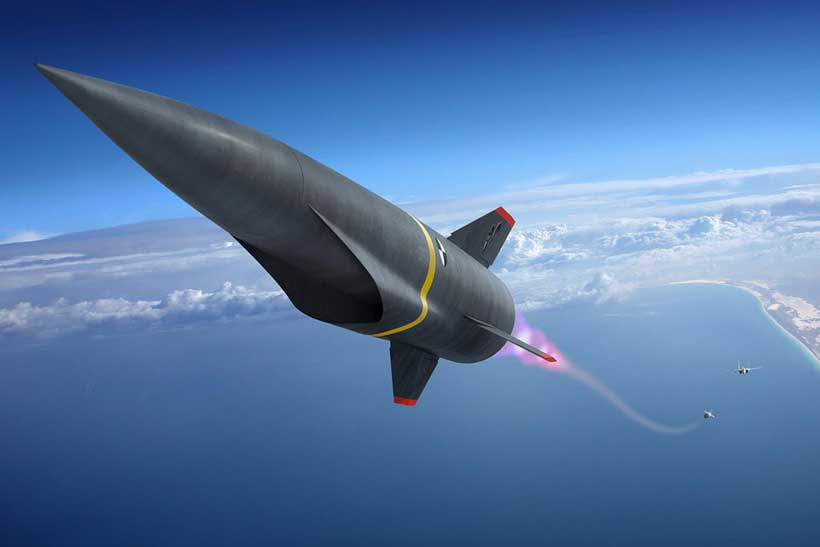Introduction

As global military powers invest in hypersonic missile capabilities, East African nations are increasingly concerned about the potential security consequences. Although countries in the region are not currently developing or deploying hypersonic weapons, the proliferation of these technologies elsewhere may have ripple effects on East Africa’s security landscape. Understanding the implications of hypersonic weapons—especially in terms of regional defense posture, strategic partnerships, and vulnerability to global power rivalries—is crucial for informed policymaking and defense planning.
Understanding Hypersonic Threats
Hypersonic missiles can travel at speeds exceeding Mach 5, with advanced maneuverability and low detection profiles, making them highly difficult to intercept. Unlike traditional ballistic missiles, which follow predictable trajectories, hypersonic weapons can adjust their flight paths mid-course, rendering existing missile defense systems largely ineffective.
For East Africa, this technological leap presents a theoretical threat rather than an immediate one. However, as larger powers integrate hypersonic systems into their global military strategies, the risk of regional entanglement in high-speed conflict zones rises. In scenarios where East Africa is home to foreign bases or strategic infrastructure, these locations could become targets or operational theaters for advanced missile systems.
Potential Impact on Regional Stability
Hypersonic weapons heighten tensions in global rivalries, and their existence could trigger a new kind of arms race. East African countries—many of which rely on international security assistance—may be drawn into geopolitical power plays involving nations like the U.S., China, or Russia. Such dynamics could destabilize the region, especially if strategic alliances bring advanced weaponry or surveillance infrastructure into East African airspace.
Furthermore, the existence of hypersonic capabilities among foreign powers could lead local governments to re-evaluate their national defense strategies. This could strain already limited military budgets, diverting attention from pressing domestic and regional security issues like terrorism, piracy, and insurgency.
Defense Preparedness and Gaps
East African defense systems are generally not equipped to detect or defend against hypersonic missiles. Most regional air defense assets are built to counter conventional aircraft and ballistic threats. Upgrading radar systems, early warning infrastructure, and interception capabilities to address hypersonic threats would require significant investment and technology transfer—options currently out of reach for most East African militaries.
Moreover, the region’s defense and research institutions are not yet involved in hypersonic R&D, which means that even awareness of these technologies is minimal. This gap increases vulnerability not only to direct attacks but also to misinformation or manipulation in times of geopolitical tension.
International Partnerships and Strategic Dialogue
East Africa’s growing security ties with external powers could expose the region to greater risks if hypersonic weapons become part of global deterrence strategies. For instance, if countries like Djibouti or Kenya host military facilities for global actors, the presence of foreign hypersonic systems could escalate tensions with rival nations. Such a scenario might compromise national sovereignty or provoke retaliatory postures.
To mitigate these risks, East African states need to engage in strategic dialogue with allies and international institutions. Diplomatic efforts should aim to clarify the region’s role in the evolving hypersonic landscape and secure commitments that limit the deployment of such technologies within or near East Africa.
Policy Recommendations and Future Outlook
Policymakers in East Africa should begin by raising awareness of hypersonic missile technologies among defense planners, academics, and security analysts. Establishing regional task forces to monitor developments in advanced weaponry can help countries anticipate risks and formulate responses collectively. Collaboration with the African Union, United Nations, and other multilateral forums is essential for keeping East Africa a zone of peace amid growing global militarization.
Additionally, East African states should invest in technological diplomacy. Participation in international arms control discussions, missile non-proliferation treaties, and space governance talks will be increasingly important. These platforms can help ensure that the region’s interests are considered in global norms and safeguard against becoming collateral in conflicts driven by superpower competition.
Conclusion
While East African nations do not currently possess hypersonic weapons, the global spread of this technology could have profound implications for the region’s security architecture. From diplomatic exposure to technological vulnerabilities, the risks are real and demand proactive policy responses. By enhancing awareness, strengthening international cooperation, and investing in strategic foresight, East Africa can better navigate the uncertainties of a hypersonic future without compromising regional peace and sovereignty.


